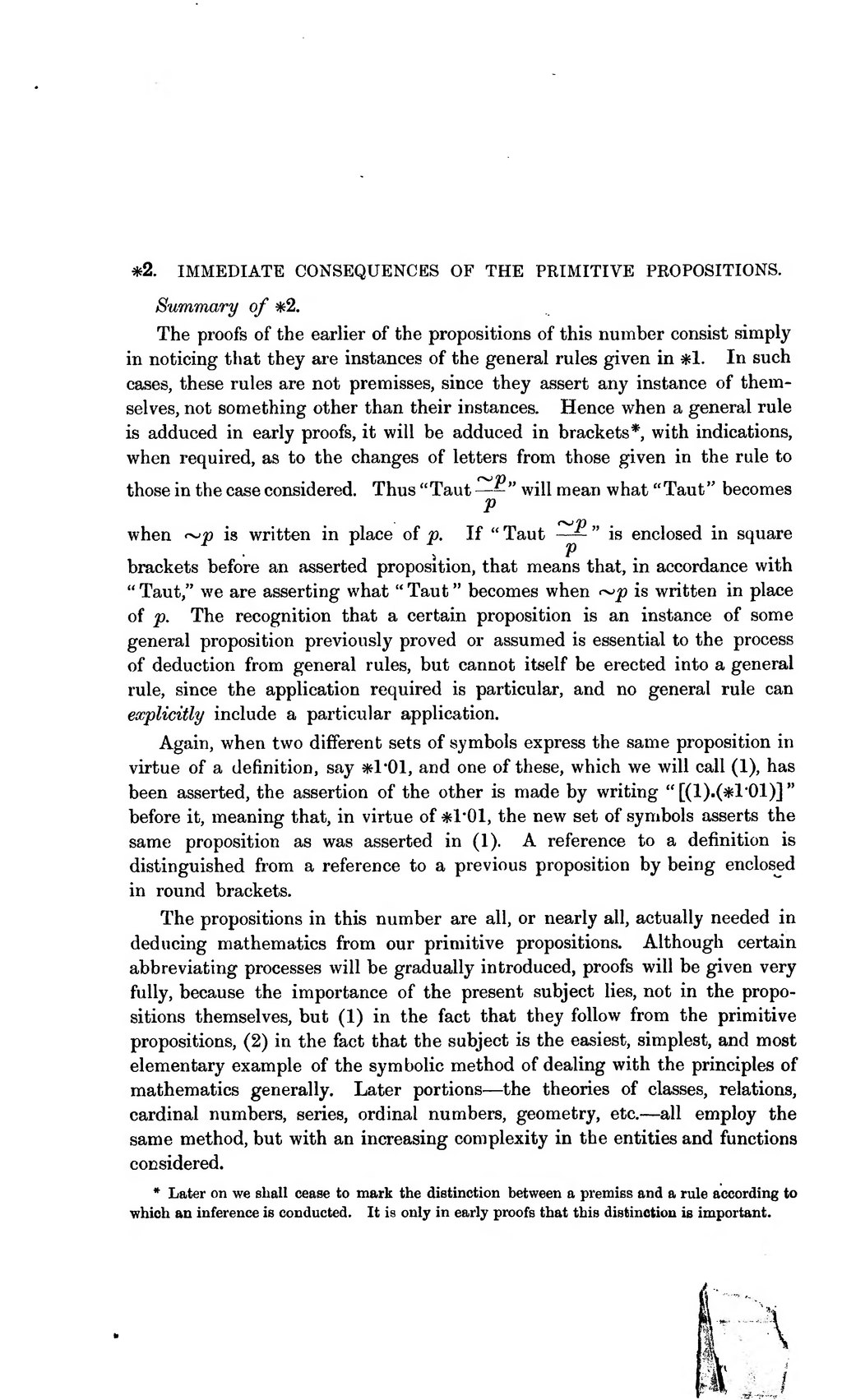Summary of *2.
The proofs of the earlier of the propositions of this number consist simply in noticing that they are instances of the general rules given in *1. In such cases, these rules are not premisses, since they assert any instance of themselves, not something other than their instances. Hence when a general rule is adduced in early proofs, it will be adduced in brackets[1], with indications, when required, as to the changes of letters from those given in the rule to those in the case considered. Thus "Taut" will mean what "Taut" becomes when is written in place of . If "Taut " is enclosed in square brackets before an asserted proposition, that means that, in accordance with "Taut," we are asserting what "Taut" becomes when is written in place of . The recognition that a certain proposition is an instance of some general proposition previously proved or assumed is essential to the process of deduction from general rules, but cannot itself be erected into a general rule, since the application required is particular, and no general rule can explicitly include a particular application.
Again, when two different sets of symbols express the same proposition in virtue of a definition, say *1·01, and one of these, which we will call (1), has been asserted, the assertion of the other is made by writing "[(1).(*1·01)]" before it, meaning that, in virtue of *1·01, the new set of symbols asserts the same proposition as was asserted in (1). A reference to a definition is distinguished from a reference to a previous proposition by being enclosed in round brackets.
The propositions in this number are all, or nearly all, actually needed in deducing mathematics from our primitive propositions. Although certain abbreviating processes will be gradually introduced, proofs will be given very fully, because the importance of the present subject lies, not in the propositions themselves, but (1) in the fact that they follow from the primitive propositions, (2) in the fact that the subject is the easiest, simplest, and most elementary example of the symbolic method of dealing with the principles of mathematics generally. Later portions—the theories of classes, relations, cardinal numbers, series, ordinal numbers, geometry, etc.—all employ the same method, but with an increasing complexity in the entities and functions considered.
- ↑ Later on we shall cease to mark the distinction between a premiss and a rule according to which an inference is conducted. It is only in early proofs that this distinction is important.



